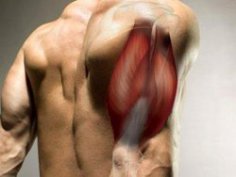
Scientists from the University of Zurich and the University Hospital Zurich have found that prolonged exposure to polluted air disrupts metabolism, increasing the risk of insulin resistance, obesity and type 2 diabetes. The study, published in the journal JCI Insight, shows that PM2.5 microparticles — one of the most common types of urban pollution — can interfere with the functioning of brown fat tissue, which is responsible for burning calories and regulating blood sugar levels.
There are two types of fat in your body. The “bad” white fat is what we usually think of when we think of being overweight. And there’s the “good” brown fat, which works like a little furnace: it burns calories to keep you warm and maintain a healthy metabolism. Researchers have found that fine dust from exhaust fumes and industry (the same PM2.5 particles that are often talked about in the news about air quality) gets into your body and essentially “breaks” this furnace. As a result, your body is less able to burn calories and control blood sugar, which puts you at risk for obesity and diabetes, even if you don’t overeat.
Experiments on mice exposed to polluted air for 24 weeks showed that brown fat lost its ability to efficiently process lipids and produce heat. The researchers recorded disturbances in the expression of genes related to energy metabolism and signs of tissue damage. Further analysis revealed that these changes are based on epigenetic processes – subtle reconfiguration of DNA that does not affect the genetic code itself.
To prove this, scientists took mice and forced them to breathe such air for almost half a year. The result was obvious: their internal “stove” (brown fat) began to work much worse. The most interesting thing is how exactly this happened. Pollution did not change the mice’s DNA — that is, it did not cause mutations. Instead, it affected the way genes are “read.” Imagine that your DNA is a huge cookbook with thousands of recipes. Epigenetics is a set of bookmarks and marginal notes that indicate which recipes to use today and which to ignore. It seems that the dirty air rearranged these bookmarks, “turning off” the genes responsible for efficient fat burning.
Two enzymes, HDAC9 and KDM2B, which “reprogram” the activity of brown adipose tissue genes, played a key role. When their activity was artificially suppressed, the animals’ metabolism was restored. According to the head of the study, Professor Francesco Paneni, these results explain how air pollution can directly affect metabolism and open up new targets for the prevention and treatment of metabolic disorders.
Continuing our analogy with the DNA cookbook, scientists have found specific “pests” — two enzymes (HDAC9 and KDM2B) that, when exposed to dirty air, start to randomly rearrange bookmarks, turning off important genes. It’s like two bad assistants hiding the recipes you need from you. When the researchers blocked the work of these “assistants” with special drugs, the mice’s bodies began to “read” their DNA correctly again, and their metabolism returned to normal. This is a huge breakthrough, because now we know a specific target that can be influenced in order to develop drugs to protect people from this effect.
The scientists emphasize that the results are especially relevant for large cities, where PM2.5 particle levels often exceed World Health Organization standards. Improving air quality, they believe, could be as important a factor in the fight against diabetes and obesity as healthy eating or physical activity.
The bottom line is this: if you live in a big city, the air you breathe can be subtly but consistently damaging your metabolism. This means that fighting excess weight is not only about what you eat and how much you move, but also about the environment in which you live. Therefore, improving the environment and the fight for clean air are becoming an integral part of health care. This can be as important as going to the gym or choosing healthy foods, because it is impossible to be completely healthy in a sick environment.
Джерело: ukr.media






